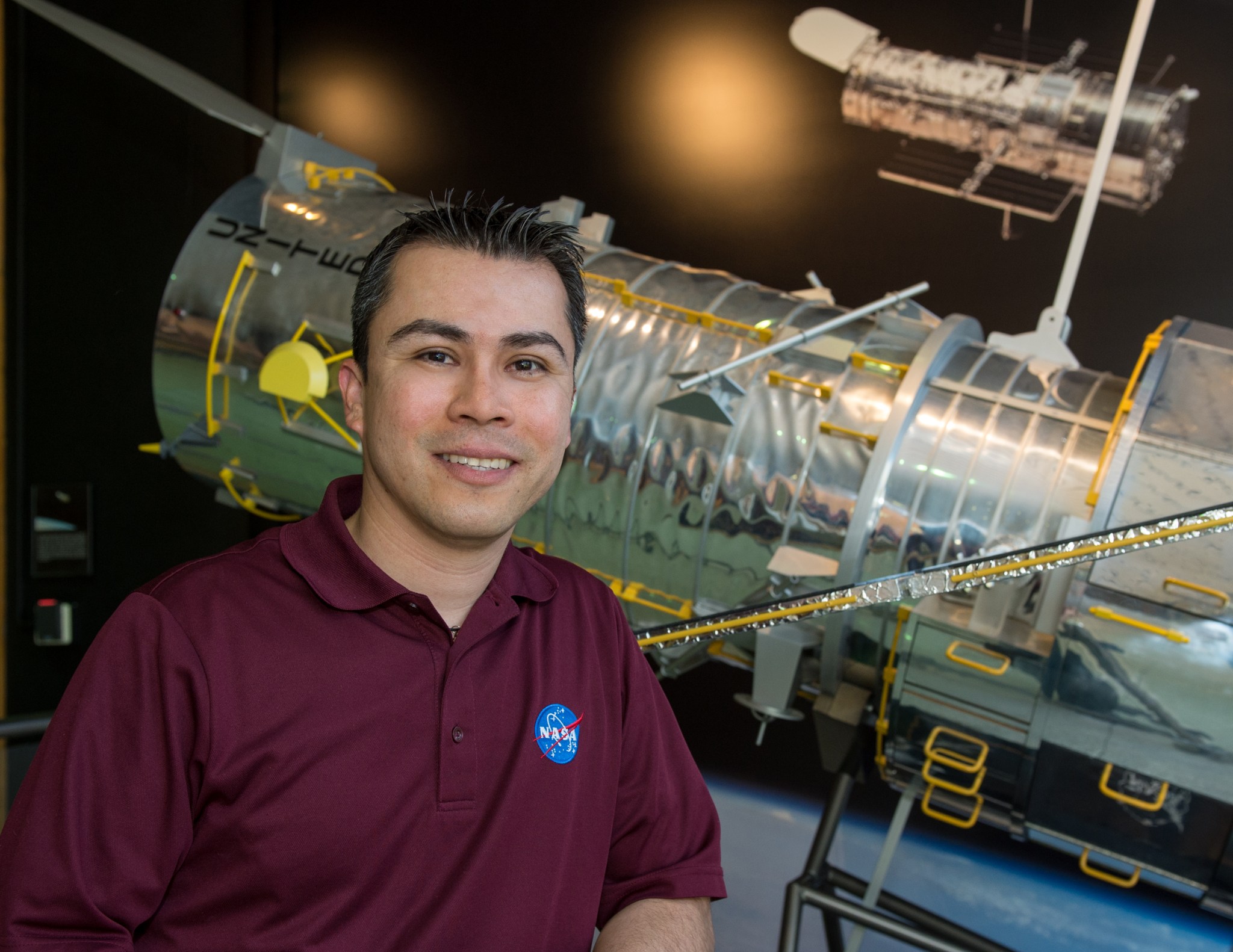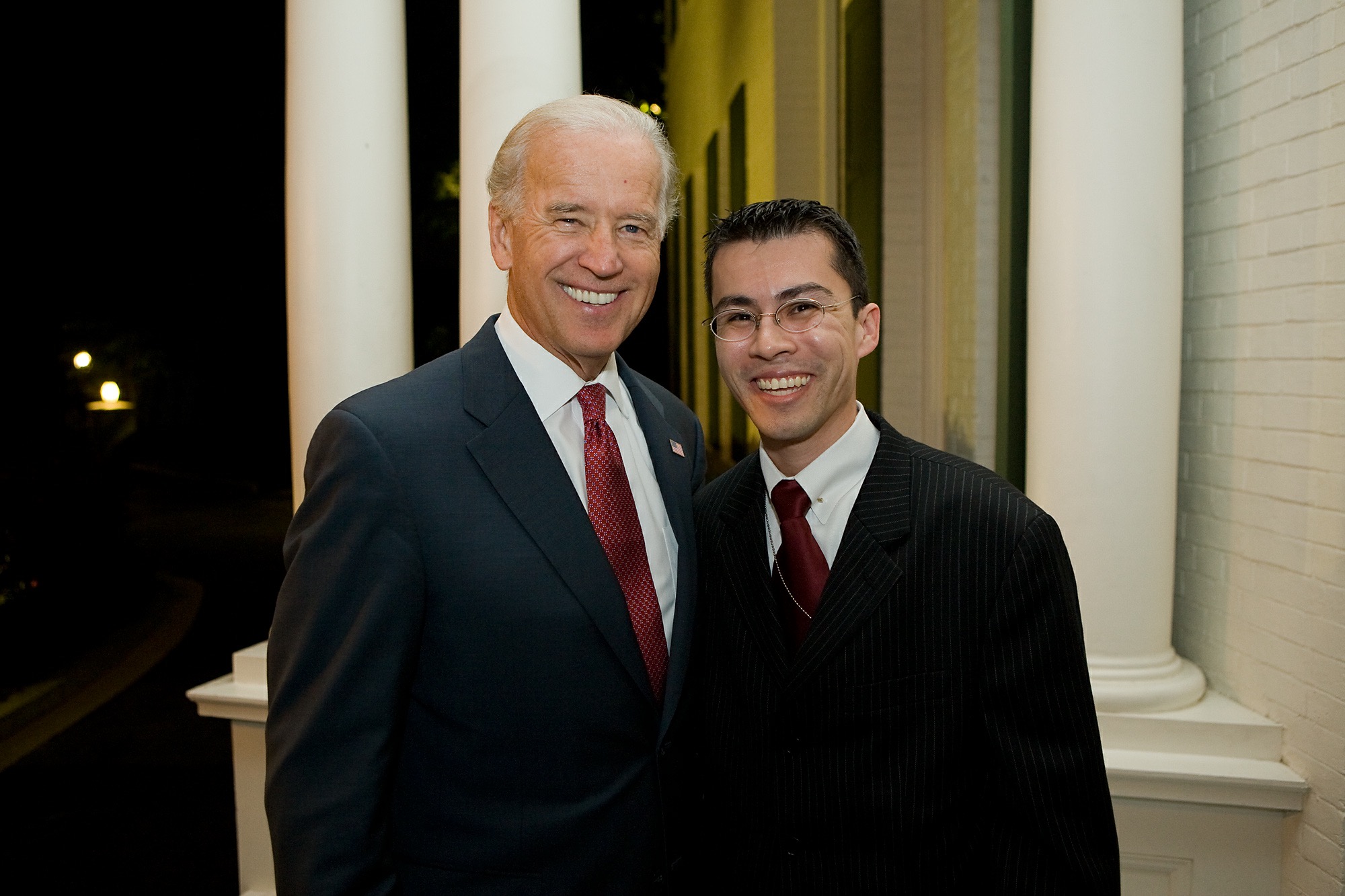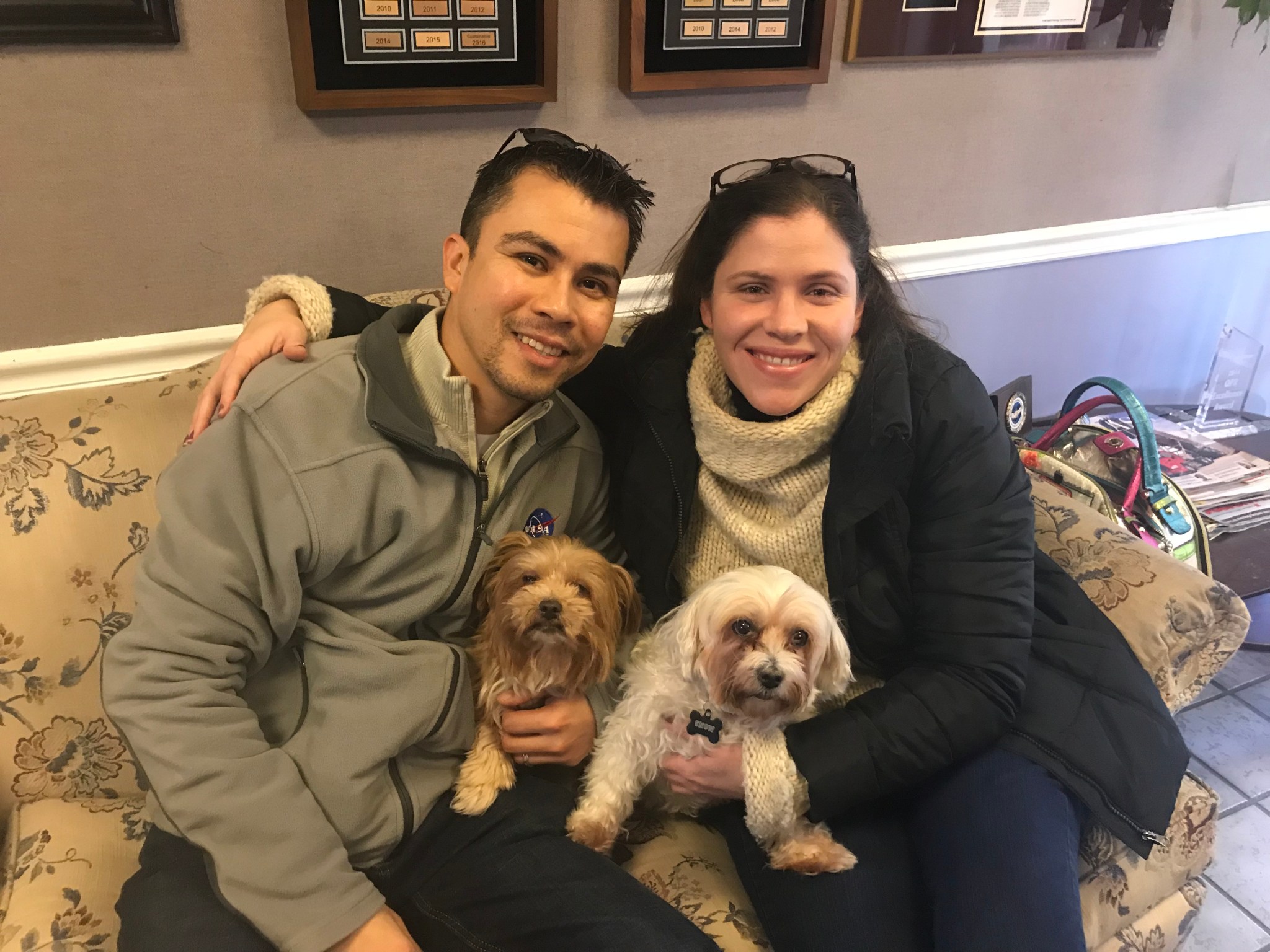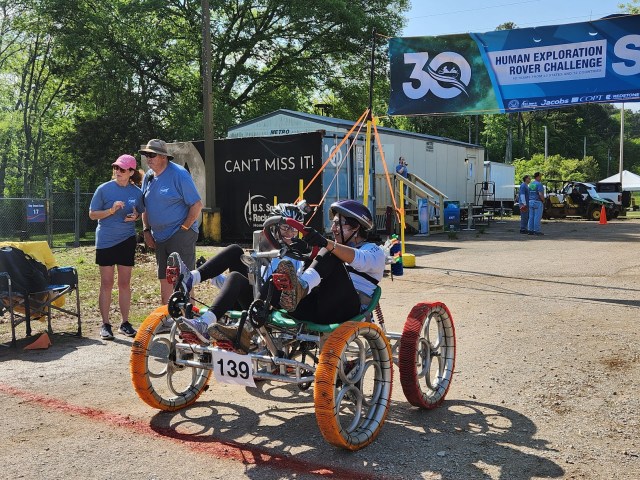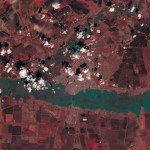Name: Esteban Morales
Title: Recruitment and Outreach Manager
Formal Job Classification: Human Resources Specialist, Staffing and Placement
Organization: Code 113, Office of Human Capital Management (OHCM)
What do you do and what is most interesting about your role here at Goddard? How do you help support Goddard’s mission?
Everyone in OHCM does a lot. Every morning I ask, “What’s the priority for today and how can I assist in accomplishing it?”
I am an agency recruitment and outreach manager assigned to NASA’s Goddard Space Flight Center. I am the first point of contact for external applicants regarding opportunities at NASA. I provide outreach for different constituency groups, including veterans, people with disabilities, college students and general applicants with a focus on diversity. I handle the logistics and planning for NASA’s recruitment and outreach events. I maintain our NASA employment opportunities listserv for external applicants looking for opportunities within NASA as well as Goddard’s recruitment social media accounts. I work with our Pathways Program Office in assisting them to onboard future Pathway interns. During the Human Capital Transformation I was a team lead for NASA’s recruitment subgroup.
How do you decide where to recruit new applicants?
I look at our current and future workforce needs which includes diversity trends and past visits. I receive feedback on potential locations from Goddard’s partners, NASA Headquarters, the Equal Opportunity Office, the Office of Diversity and Inclusion, and the Office of Education. If I participate at a career fair or information session at a particular college in the fall without much success, I may choose a different location or approach for the following recruitment cycle.
How do you decide which constituency groups to focus on each season?
We follow four Executive Orders (EOs) passed by President Obama, which are the People with Disabilities EO, the Veterans EO, the Recruiting and Hiring Students and Recent Graduates EO, and the Diversity EO. All of these EOs require us to focus on their identified groups. The Diversity EO deals with groups outside of people with disabilities and veterans to include, among others, Hispanics, African Americans, Asians, Native Americans, women, the elderly and the LGBT community.
I recruit from all of these different groups. We would like to attract a workforce that reflects the diversity of our nation. I examine U.S. Census data and compare it to our center data to determine where to target our recruiting efforts.
Are you involved in selecting new employees?
I have no authority over selection. I try to attract the best and brightest applicants and those that are most passionate about our mission.
How do you plan and implement NASA’s recruitment events?
Planning encompasses researching the registration requirements, costs and travel logistics. I also have to find recruitment volunteers in case I am unable to attend. The recruitment volunteers require training. I also have to make sure that they are prepared with banner stands, table covers, brochures and other appropriate information.
After an event, I conduct a lot of follow-up activities. I input the information from every potential applicant met by myself or recruitment volunteer into our NASA employment opportunities listserv. I then send out an emails to the group with information about how to apply for NASA’s employment opportunities, which usually results in receiving many candidate inquiries, all of which I respond to personally. I also provide information through our recruitment social media accounts as recruitment volunteers attend events.
When do you typically recruit?
Our recruitment seasons are in the fall and the spring, and at times, throughout the year. Usually, I’m planning and implementing events a lot in February-March and September-October, but there are events spread out throughout the year. We are fortunate to have a substantial amount of help from our Goddard recruitment volunteers. This job would definitely be tough to do without them.
Please tell us about the Pathways Program.
The Pathways Internship Program is the only federal government-wide internship program for college students that can, depending if the individual meets all the requirements, lead to a permanent federal position. At NASA, this program opens the doors of opportunity for our future workforce needs. We plan our recruiting events based on when our Pathways vacancies are open. We average about 2,500 applications per recruitment season for about 35 to 40 positions.
What was your role as a Human Capital Transformation team lead for NASA’s recruitment subgroup?
As part of NASA’s Human Capital Transformation, NASA developed a recruitment subgroup to develop an agency-wide recruitment program. Within this subgroup, there were four teams. I led the Event Impact Tracking group, which developed a strategy for measuring return on investment for our agency-wide recruitment events.
What is Goddard’s greatest attraction for recruits? What makes people stay?
NASA’s greatest attraction is our mission. Goddard’s biggest driver is our Earth and space science missions. Our mission and our university-life environment keep people here at Goddard.
My business card says, “We are a workforce that sees the invisible in doing the impossible.” No other place does what we do.
What lessons or words of wisdom would you pass along to somebody just starting their career at Goddard?
Definitely take the time to get to know your coworkers, not only professionally, but also personally. Also, build relationships with counterparts and colleagues within Goddard and across NASA. Most importantly, always approach your workday with that same passion that drove you to apply to NASA in the first place.
Why did you decide to work as a Recruitment and Outreach Manager?
I was born in Ciudad Juarez, Mexico, a border town to El Paso, Texas. My father passed away when I was 5 years old. I grew up in El Paso and later in Los Angeles. When I was 17, I moved to San Antonio to attend the University of Texas at San Antonio where I received my bachelor’s in political science. I began in this type of profession when I accepted my first job in the Washington, D.C., area working for the Hispanic Association of Colleges and Universities (HACU) National Internship Program. HACU remains the largest Hispanic internship program in the country for placing students in fully paid internships at agencies across the federal government. As part of my responsibilities, I visited minority-serving institutions throughout the year.
After working at HACU for three years, I started working as civilian recruiter for the U.S. Coast Guard (USCG), which sent me to the University of Baltimore for a master’s in public administration. During my seven-and-one-half years with USCG, I completed a year-long leadership program through the U.S. Department of Agriculture Executive Potential Program (EPP). The EPP included a detail assignment to the Department of Homeland Security and a six-month detail assignment at the White House, where I had the honor and privilege of working for then-Vice President Joe Biden as an associate for his Office of Intergovernmental Affairs.
After my time at the USCG, I accepted an opportunity at the Department of Labor as their diversity and inclusion program manager.
After two-and-one-half years, I accepted this job opportunity at NASA’s Goddard Space Flight Center. I can truly say now, after five years with NASA, I’m never leaving. This is absolutely by far, the best place to work in the federal government!
Who inspired you?
My grandfather inspired me. He was a migrant farmworker who arrived from Mexico under the Bracero Program. During World War II, the U.S. created the first Mexican worker program, which allowed Mexicans to enter the U.S. as migrant farmworkers. They were called braceros.
He came to the U.S. to provide an opportunity for his children and grandchildren to achieve the American dream. He always taught me never to forget where I am from, and instilled in me the values of hard work, discipline, decency and compassion. He taught me to always understand that everything in this life is not a right, but a privilege.
What are your hobbies?
I enjoy spending time with my beautiful wife, a scientist who works at the National Science Foundation, and our two rescue dogs, Fifi and Snow. We love taking long walks together.
What is your “six-word memoir”? A six-word memoir describes something in just six words.
Dedicated. Determined. Goal-oriented. Disciplined. Motivated. Passionate.
By Elizabeth M. Jarrell
NASA’s Goddard Space Flight Center, Greenbelt, Md.

Conversations With Goddard is a collection of Q&A profiles highlighting the breadth and depth of NASA’s Goddard Space Flight Center’s talented and diverse workforce. The Conversations have been published twice a month on average since May 2011. Read past editions on Goddard’s “Our People” webpage.





























